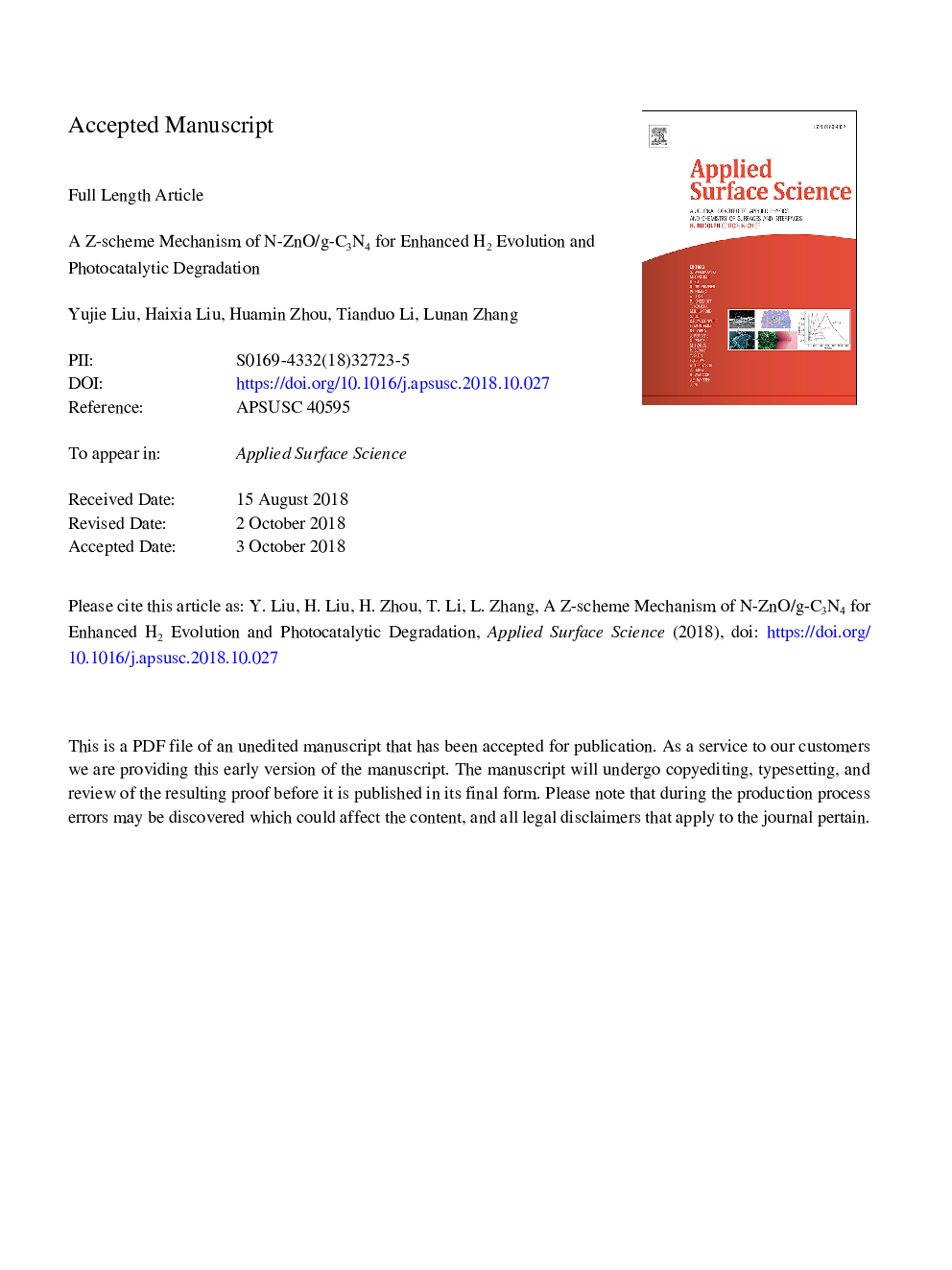| Article ID | Journal | Published Year | Pages | File Type |
|---|---|---|---|---|
| 11001920 | Applied Surface Science | 2019 | 26 Pages |
Abstract
The N-ZnO/g-C3N4 composites prepared by high temperature calcination exhibited excellent performance in both the photocatalytic H2 evolution and photocatalytic degradation of Methylene blue (MB). It can be seen that the absorption range of ZnO extends from ultraviolet light to UV-visible light after N dopant. The combination with g-C3N4 further enhances the absorption range of N-ZnO, thereby increasing the utilization of light. A Z-scheme photocatalytic system mechanism of N-ZnO/g-C3N4 has been proposed for the enhanced H2 evolution and photocatalytic degradation rate. The proper bands position of N-ZnO facilitates the formation of Z-scheme mechanism. The electrons on CB of N-ZnO would migrate to VB of g-C3N4, which can effectively prevent the recombination of electrons and holes. The generation of electrons in CB of g-C3N4 and accumulation of holes in VB of N-ZnO can improve the photocatalytic efficiency.
Related Topics
Physical Sciences and Engineering
Chemistry
Physical and Theoretical Chemistry
Authors
Yujie Liu, Haixia Liu, Huamin Zhou, Tianduo Li, Lunan Zhang,
